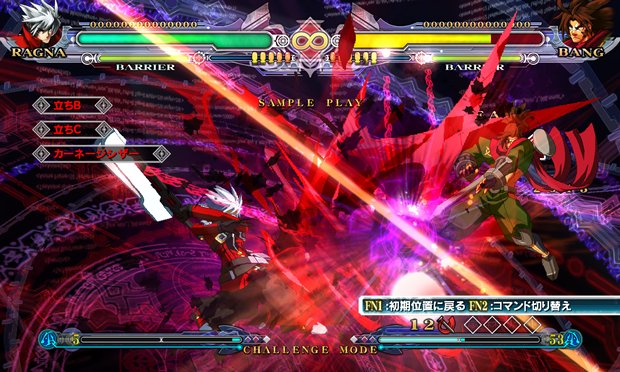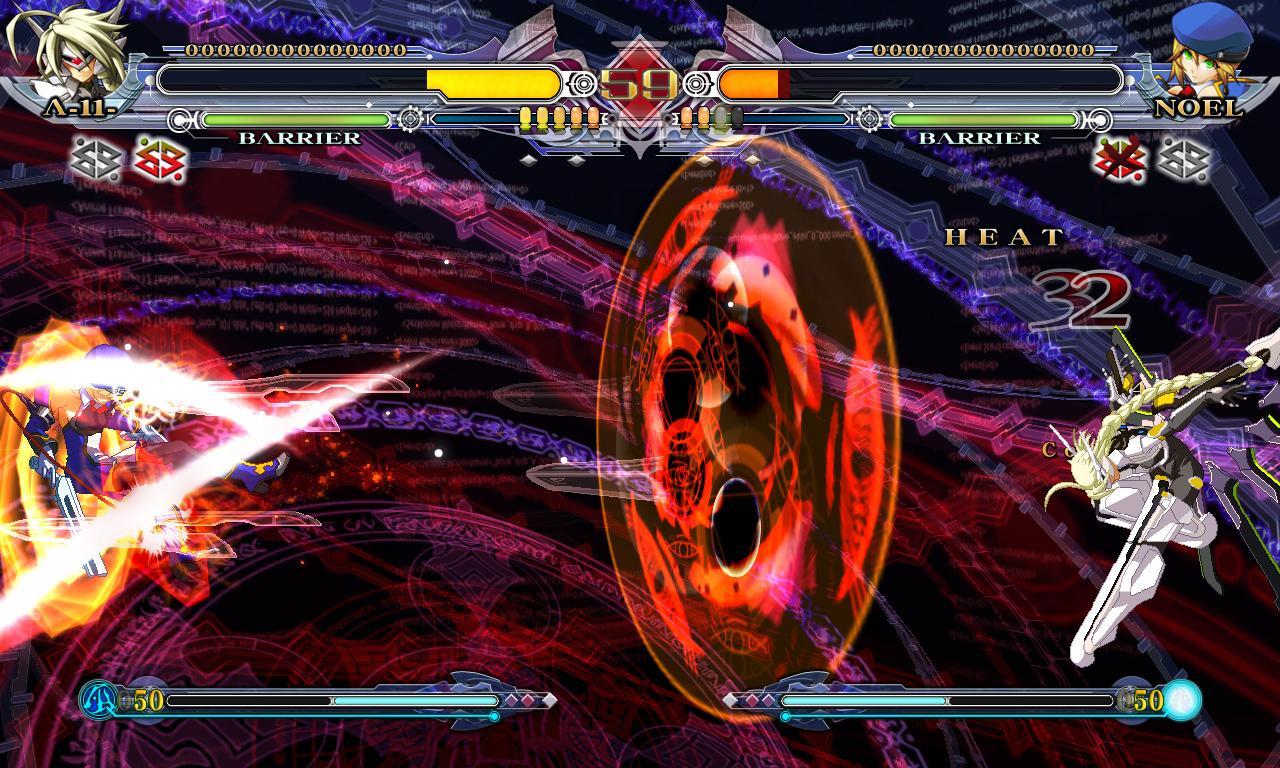Why you can trust GamesRadar+
CS features a lot of single player modes, including Arcade, Story, Challenge, Legion and Score Attack to keep solo players busy. The new Legion single player mode, taken from the PSP version of BlazBlue, plays like a mini military strategy game; you battle squads of characters on a map, bolstering your ranks with defeated foes. Legion mode forces you to choose between sacrificing characters you’re bad with versus putting your preferred characters at risk; damage is cumulative in this mode, so there’s constant pressure. The Story mode is actually well conceived, especially for a fighting game, and features tons of spoken dialogue and plot explaining the game’s lore and the characters’ allegiances/motivations. Whether or not you’ll enjoy the plot depends on how many anime tropes and clichés you can stomach, but for those that enjoy the genre and want to get into the universe, it’s well presented.

Even more painful than the sword slash was the epileptic fit from all the visual effects
While CS has its fundamentals locked down, it's hampered by some quirks: the game features much stricter special move inputs than SSFIV, especially when trying to perform Distortion Drive (Super) attacks; it almost seems like the faster you perform the input the less likely it is to work. It’s a minor quibble, but one that takes some getting used to; slowly and precisely inputting a command for a Super attack in the heat of battle does not come naturally. The game also features an excessive amount of voice effects during matches. Every time a character performs one of the game’s techniques, like a counter, the narrator will yell “Counter!” combine this with the characters themselves spouting some gibberish every time they get hit or use a special attack, and every match quickly becomes a blathering cacophony of noise. CS also suffers from the industry standard "smash a controller, throw your TV out the window" final bosses that read your moves and automatically counter anything you do.
Any modern fighting game needs solid online support, and like its predecessor Calamity Trigger, CS has it in spades. The matches we played online seemed choppy during the loading screen, but as soon as the fight actually started they were smooth as butter. Of course your online experience will vary depending on your connection, but don’t blame the netcode, it’s solid. CS also offers excellent options for finding games online, an area in which Capcom should definitely be taking notes.
Continuum Shift improves on Calamity Trigger in every way, and it's undoubtedly one of the best fighting games available; it oozes style, incorporates some truly radical ideas into its gameplay and sports a level of polish not always seen in fighting games. For players who feel they have a handle on 2D Fighters, CS offers an advanced course, bending the genre's core concepts to their breaking points and forcing you to think, and play, in new ways. BlazBlue: Continuum Shift isn't just a worthy alternative to SSFIV, it's a genuine competitor.
July 27, 2010
More info
| Genre | Fighting |
| Description | Continuum Shift improves on Calamity Trigger in every way, and it's undoubtedly one of the best fighting games available; it oozes style, incorporates some truly radical ideas into its gameplay and sports a level of polish not always seen in fighting games. |
| Platform | "Xbox 360","PS3" |
| US censor rating | "Teen","Teen" |
| UK censor rating | "","" |
| Release date | 1 January 1970 (US), 1 January 1970 (UK) |




